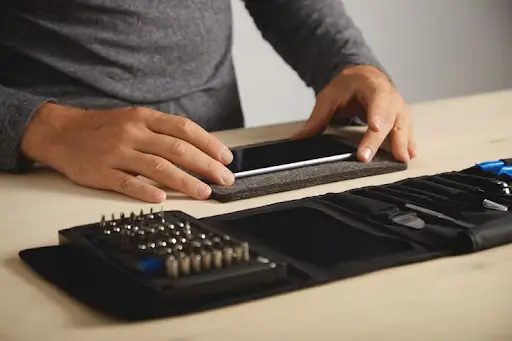How to Effectively Hire iPhone Hacker! Get help from Certified...
Read More
The term “professional iPhone hacker” often conjures images of shadowy figures breaching devices for malicious gain. However, the reality is far more layered. Legitimate professional iPhone hackers are cybersecurity experts who use advanced technical skills to identify and remediate vulnerabilities in iOS devices. Their work is critical in an age where iPhones store sensitive personal, financial, and corporate data.
This blog provides a technical deep dive into how professional iPhone hackers operate, the tools they use, and the role of cybersecurity services in countering threats. Whether you’re curious about “iPhone hacking services” or seeking to bolster your device’s defenses, this guide sheds light on the intersection of technology, ethics, and security.
Professional iPhone hackers begin by identifying vulnerabilities in Apple’s iOS ecosystem. These weaknesses can exist in:
Common Exploitation Techniques:
For ethical hackers, discovering these flaws is the first step toward remediation. Malicious actors, however, exploit them for unauthorized access.
Professional iPhone hackers rely on specialized tools to execute their work:
A. Forensic Tools
B. Penetration Testing Frameworks
C. Custom Scripts and Exploits
Ethical hackers often write custom Python or Bash scripts to automate vulnerability scans or exploit chaining (combining multiple weaknesses for deeper access).
D. Hardware Devices
A typical engagement by professional iPhone hackers involves:
Phase 1: Reconnaissance
Phase 2: Exploitation
Phase 3: Persistence
Phase 4: Reporting
A. Pegasus Spyware (NSO Group)
Pegasus, a notorious surveillance tool, exploited zero-click iOS vulnerabilities to infiltrate devices. Professional cybersecurity services later reverse-engineered the malware to develop detection tools.
B. FinFisher and Government Surveillance
This state-sponsored spyware used fake iOS updates to install keyloggers, highlighting the need for secure software validation.
C. Corporate Penetration Testing
A Fortune 500 company hired ethical hackers to test its employee iPhones. The team uncovered unsecured APIs in a corporate app, preventing a potential data breach.
Legitimate iPhone hacking services operate under strict guidelines:
Regulations like the EU’s GDPR and California’s CCPA mandate penalties for non-compliance, emphasizing the importance of working with certified professionals.
To defend against threats, cybersecurity services deploy:
For individuals, services like Apple’s Advanced Data Protection and iCloud end-to-end encryption add critical safeguards.
Professional iPhone hackers operate at the cutting edge of technology, leveraging deep technical knowledge to either exploit or protect iOS devices. While “iPhone hacking services” can be a double-edged sword, ethical practitioners play a vital role in strengthening global cybersecurity.
By understanding their methods, and partnering with reputable cybersecurity services—businesses and individuals can stay one step ahead of threats. As Apple continues to enhance iOS security, the cat-and-mouse game between hackers and defenders will persist, underscoring the need for vigilance, education, and innovation.
Please fill the contact form below with your requirements and we will get back you soon.
How to Effectively Hire iPhone Hacker! Get help from Certified...
Read MoreWhy You Should Hire an Ethical Hacker for Cyber Security...
Read MoreIs It Legal to Hack Your Spouse? Ethical Ways to...
Read More